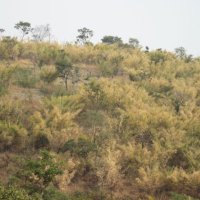
Goats are ‘savings banks on the hoof’, providing economic security as well as manure for crops. Wikipedia
Dairy Animals & Traditional Dairy Production in Central Africa –A Brief Background
Cattle and goats are important components of small farm agriculture in Burundi, Rwanda and the eastern Congo. Agriculturalists were the first migrants into the area, many hundreds of years ago. Of West African Bantu origin, these groups brought with them the Guinean strain of West African Dwarf goats. Over hundreds of years, these goats have evolved into a taller, but still meat-based breed that is known as the Central African Goat.

A Central African Doe & her ½ Alpine buckling.
During the 13-14th centuries, it is thought that groups of Nilotic tribesmen from the Northeast of Africa gradually migrated into the central African Highlands of Burundi, Rwanda and eastern Congo. These cattle-raising pastoralists brought their long-horned Ankole cattle with them.

Ankole bull in downtown Kinshasa, Rwanda
Called the ‘cattle of kings’, the ownership of Ankole has traditionally been a mark of prestige, while also providing milk and meat – particularly during ceremonial occasions. Although rich in fat, Ankole milk is often skimmed of its cream, which is then either made into butter or yogurt, or given to other livestock. Because the local meat goat has poor milk production, goat milk has never featured in local diets until the recent introduction of dairy goat breeds. And even so, cheese of any kind is simply not a feature of local cuisine.
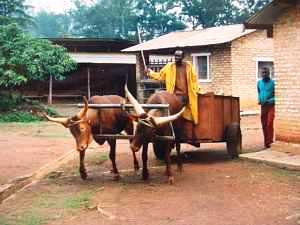
At the Ngozi artisan cheese facility in central Burundi, Ankole cows are used to haul fodder for the dairy goats, and are also milked for cheese production
Due to ease of care, size, fast reproduction, and decreasing availability of fodder, goats have become the most important livestock breed on small farms in Burundi. Since the crisis and ensuing civil war of 1993 when 100,000’s of cattle were killed, many herds were moved to peri-urban areas where security is better. There, they have been raised in semi-permanent stall arrangements, supplying meat and milk to urban populations.
Origins & Current Status of Cheese Production
Cheese production appears to have been introduced to the central African region by Italian and Belgian missionaries. Although exact dates are unclear, this certainly occurred in Burundi and Rwanda by the time the Belgians took over the colony from the Germans in 1916. After that time, increasing numbers of Belgians and other foreign nationals immigrated into the area in order to follow government, military or commercial interests. Hence, cheese production went to supply the growing international communities. Initial production was established in the central highlands of Burundi-Rwanda, where the climate is far more moderate than along the coastal areas of Lake Tanganyika.

Arrival of Belgians in Burundi in 1916, following the defeat of the Germans in WWI when their central African colonies were given over to the Belgians to administer. Collarta et Célis
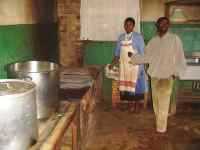
Bugenyuzi Cheese Facility. Due to tuberculosis, milk is always boiled. This cheese kitchen uses large charcoal stoves
Today in Burundi, cheese production continues to be organized by missionary groups, including the ‘The Little Apostles of Jesus’, who built an artisan cheese production center at Mutoi, in central Burundi. They later developed a similar cheese center in the neighboring province of Karuzi,whose kitchen and cheese room are show in these pictures.
Both of these installations rely on the purchase of cow milk from surrounding farms, and have also helped to improve dairy cattle farming in their areas. However, as mentioned above, with the civil war of 1993 and ensuing decade of unrest, great numbers of cattle were lost. Consequently, while cheese production has continued, it has been on a much reduced scale.

One of the stages of cheese pressing at the Bugenyuzi cheese facility
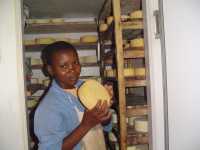
Cheese room at the Bugeyuzi cheese facility
Several artisan cheese producers – both private and mission-based – were also established to the west of Burundi, in the eastern Congo highlands, some decades ago. In spite of civil war and unsettled conditions, several of these producers continue today. In fact, some of the best cheese of central Africa comes from this area and can be found in the markets of Bujumbura – the capital of Burundi.
In the late 1970’s, the most ambitious artisan cheese production scheme of central Africa was established by the German development organization GTZ in the north of Burundi, in Ngozi Province. The project aimed to establish small farmer dairy goat husbandry by importing German Alpine does and bucks and building an artisan cheese production facility. For over two decades GTZ worked with Burundian counterparts to establish small farmer dairy goat associations to whom bucks were supplied for crossbreeding with the local goat so that an improved dairy goat breed could be developed. These small farmers sold their goat, as well as cow milk to the scheme at guaranteed prices, and the milk was then processed into several different kinds of cheese.

Cattle whose milk is sold for cheese production at Ngozi are often zero-grazed and fed by cut-and-carry fodder grasses

The GTZ project faltered with the civil war and the departure of German technical assistance. Although cheese production was continued on a much reduced scale, key supplies, technical training, and replacement animals could not be brought into the country and by 2000 remaining animals in the area were considered highly inbred.
Several years ago, the scheme was converted into a private enterprise with assistance from the European Union. 124 Saanen and Toggenburg dairy goats were imported, staff were trained, and cheese production was again on the increase.
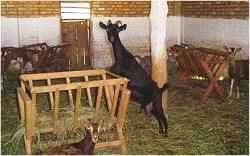
Toggs & Saanens imported by the Ngozi project

Ngozi Weanlings & Exterior Mangers.Bucks will go to small farmer dairy goat associations
Artisanal cheese production at Ngozi is similar to that found elsewhere in central Africa in being totally independent of electrical supply. Milk pasteurization takes place over wood or charcoal stoves, pressing is accomplished with the use of different sizes of stone tiles and concrete weights and using locally, hand-made wooden moulds. Some of the artisan producers have constructed cheese caves but others only produce cheese seasonally, during the cool weather.

Cheese pressing at Ngozi using light weights

Cheese pressing at Ngozi using cement weights that have been specially made

The cheese cellar at Ngozi is about 40′ square and can accommodate a variety of cheeses

The cheese cave at Ngozi is about 20 feet underground

Sliced, local cheese from either Burundi or the Congo is always offered in the Breakfast Buffet at the Hotel Club du Lac Tanganyika
Input & Distribution Systems
Rennet, thermometers, and other supplies and equipment are not locally available. Artisan producers rely primarily on personal contacts to buy such items outside of the country and hand-carry them in. By consequence, shortages sometimes persist for long periods and cheese production suffers accordingly.
Animals are milked once or twice daily into plastic buckets and the milk is first skimmed of cream and then delivered to

Vee Jay and an Improved Dairy Cow – milked into the blue, plastic bucket
intermediary merchants, cheese producers, or other distributors by foot or bike. There are no milk cooling or regular delivery systems in the region.
Marketing of milk and cheese relies primarily on farmer-organized deliveries into urban centers, where it is hawked in markets or sold on to a few butchery and small grocery outlets.

Cheese and Olives Artisan cheese made in Burundi and in the Eastern Congo for sale at the ‘Boucherie Nouvelle’ in Bujumbura, Burundi. The butchery makes its own olives, feta, and a variety of sausages and other delicatessen items. – in addition to selling central African artisan cheeses

Some of the delicious pâtés and sausages made by the Boucherie Nouvelle
Problems & Opportunities
Although cheese is not a part of traditional cuisine, populations in urban areas are increasingly turning to dairy products as a good source of protein. As well, with the return of several 100,000 refugees to Burundi and the demobilization of ex-rebels and military following the signing of a peace accord, the dairy sector can provide urgently needed income to small farmers and artisan producers.
Major difficulties in meeting these demands for cheese producers include:
- Lack of technical training & information
- Lack of equipment and supplies
- Lack of price information
- Lack of transport and communication
- Lack of market information & competitive marketing channels
Difficulties facing dairy farmers are similar to those above, but pertain to:
- Dairy animal husbandry
- Handling of milk
- Sales of milk
Strategies for Goat Rehabilitation Projects
Due to the relative importance of goats in rehabilitating farms in the country, a number of NGO projects have been working to strengthen smallholder goat production and to develop sustainable, market-based goat enterprises based on meat, dairy and other animal by-products. Key activities include crossbreeding and herd improvement and restocking, generally with Boer meat goats and Alpine dairy goats, which are crossbred to local Central African Goats.
Improved husbandry has been met by training of goat farmers and animal technicians, as well as assessments of different aspects of the goat sector – activities in which I have – and continue to be involved together with NGOs, FAO, and scientists at the national agriculture research institute.

Serge with a new-born Alpine and some of the Project foundation stock brought from Kenya and used in our crossbreeding program
-3.233595
29.159775
































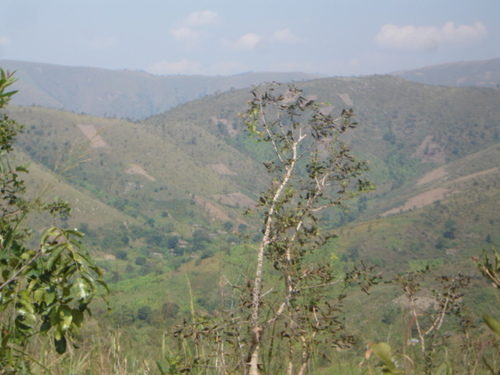

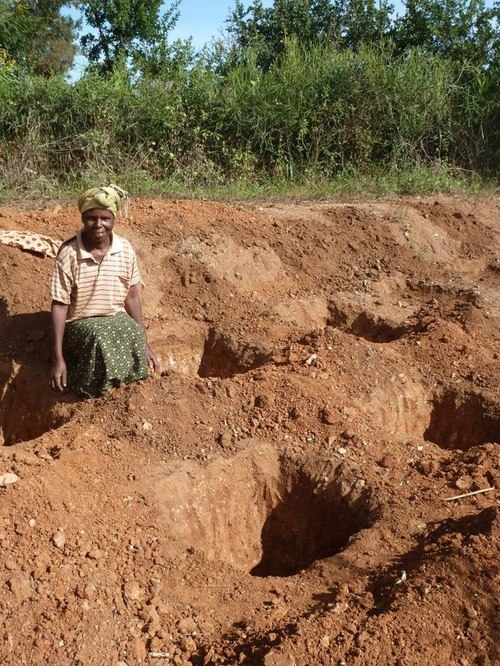















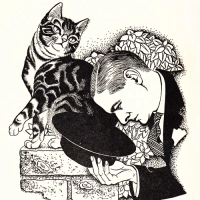
![Baking Holy Bread in the Coptic Monasteries of the Eastern Desert of Egypt [qurban; 'urban]](https://i0.wp.com/dianabuja.wordpress.com/wp-content/uploads/2015/02/one-whittemore_s-expedition-before-leaving-the-monastery-of-saint-anthony-egypt-1930-19312.png?resize=200%2C200&ssl=1)

